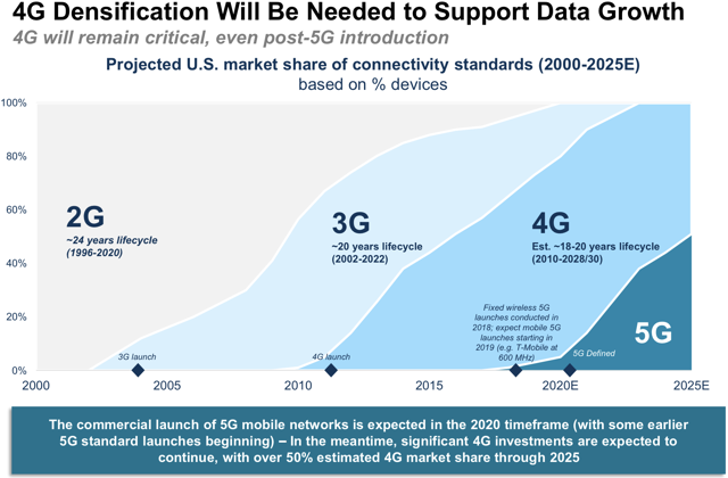Very best safest distance coming from a 5G cell Tower?

If you've ever walked through a city and spotted tiny 5G cell towers on street light poles. They appear like tiny boxes however, they're actually transmitting wireless signals from cellular providers to your phone.
These smaller towers are replacing the larger, purpose-built cell towers. Although they're not as visible however, they could create problems for those who live nearby.
It is the Federal Communications Commission's Radiation Exposure Thresholds
The FCC's Radiation Exposure Thresholds determine the maximum amount of time a person can be exposed to electromagnetic energy from wireless devices. The exposure limits are based on scientific data that prove that electromagnetic energy could be harmful to health.
The rate of absorption called the specific absorption rate (SAR) is an indication of the amount of radiofrequency energy taken up by tissues. It's typically 1.6 Watts per kilogram spread over a Gram of tissue.
Since 5g is able to transmit at higher frequencies this could be able to increase the intensity of energy on the skin as well as other body parts. This could lead to many potential harms, including exacerbated formation of skin disorders such as dermatitis and cataracts, and skin cancer.
Because of the potentially severe effects of 5g radiation, PSU has chosen to establish a general, localized limits on power density, which is 4mW/cm2 based on the average on 1cm2, and not to exceed 30 minutes, for all 5G services at 3000 GHz. This limit for localization is in line with the peak SAR that is spatially averaged at 1.6 W/kg, averaged over one g of tissue at 6 GHz.
The FCC's Maximum Exposure Thresholds
If you've ever used a cell phone, then you're aware that a safe distance from the tower is at least 400 meters away. This is due to the power of the transmission of a cell tower increases dramatically the farther you are from it.
While it sounds like something that's good but the truth is that those living close to towers might be more prone to health issues. For instance, a study conducted in 2014 in India found that residents who lived within 50 meters of cell towers experienced significantly more health complaints than those who were far from antennas.
This study found that people who moved to areas further away from cell towers experienced their symptoms return to normal within a couple of days. https://ctxt.io/2/AACQlSXQEw have demonstrated that exposure to extreme frequencies of radiofrequency electromagnetic fields (EMFs) can lead to cancer, brain tumors and other health issues.
This is due to the fact that RF radiation, which is used for wireless communication, has the ability to penetrate the human body's outer layer of skin. This is important to understand because the skin acts as a protective barrier against injury to the body, infection from pathogenic microorganisms, as well as the entry of harmful substances. The skin is the most important organ in the human body, and is responsible for keeping the integrity of the other organs.
The FCC's Minimum Exposure Thresholds for the Minimum Exposure
The FCC's Minimum Exposure Thresholds rely on a variety of assumptions that are not supported by scientific research. what is a safe distance from a 5g cell tower include the erroneous assumption that exposures to RF radiation are safe because of the minimal absorption into body (i.e., tissue heating).

The assumption is also ignoring the deeper penetration of the ELF elements of modulated radio signals as well as the consequences on the body of short bursts caused by RF pulses. https://blogfreely.net/doctorsharon4/what-is-the-safest-distance-from-your-5g-cell-system-1tqj do not correspond with the current understanding of biological consequences of RF radiation. Therefore they shouldn't be relied upon for health-protection exposure guidelines.
Furthermore there is the fact that both ICNIRP and FCC limit their radiation limits for local peak SARs, based on the maximum spatial specific absorption rate (psSAR) which is not a reliable dosimetric instrument to assess the amount of exposure to RF radiation. Particularly, psSAR is inaccurate for frequencies that exceed 6 GHz. Furthermore, psSAR has not been evaluated for RF radiation that is exposed to other environmental agents , such as sunlight. Interactions of RF radiations with different environmental agents may result in antagonistic or synergistic impacts. This could result in an increased risk of adverse health consequences. For example, co-exposure to RF radiation and sunlight could increase the risk of developing skin cancer and exacerbate other skin conditions like acne.
